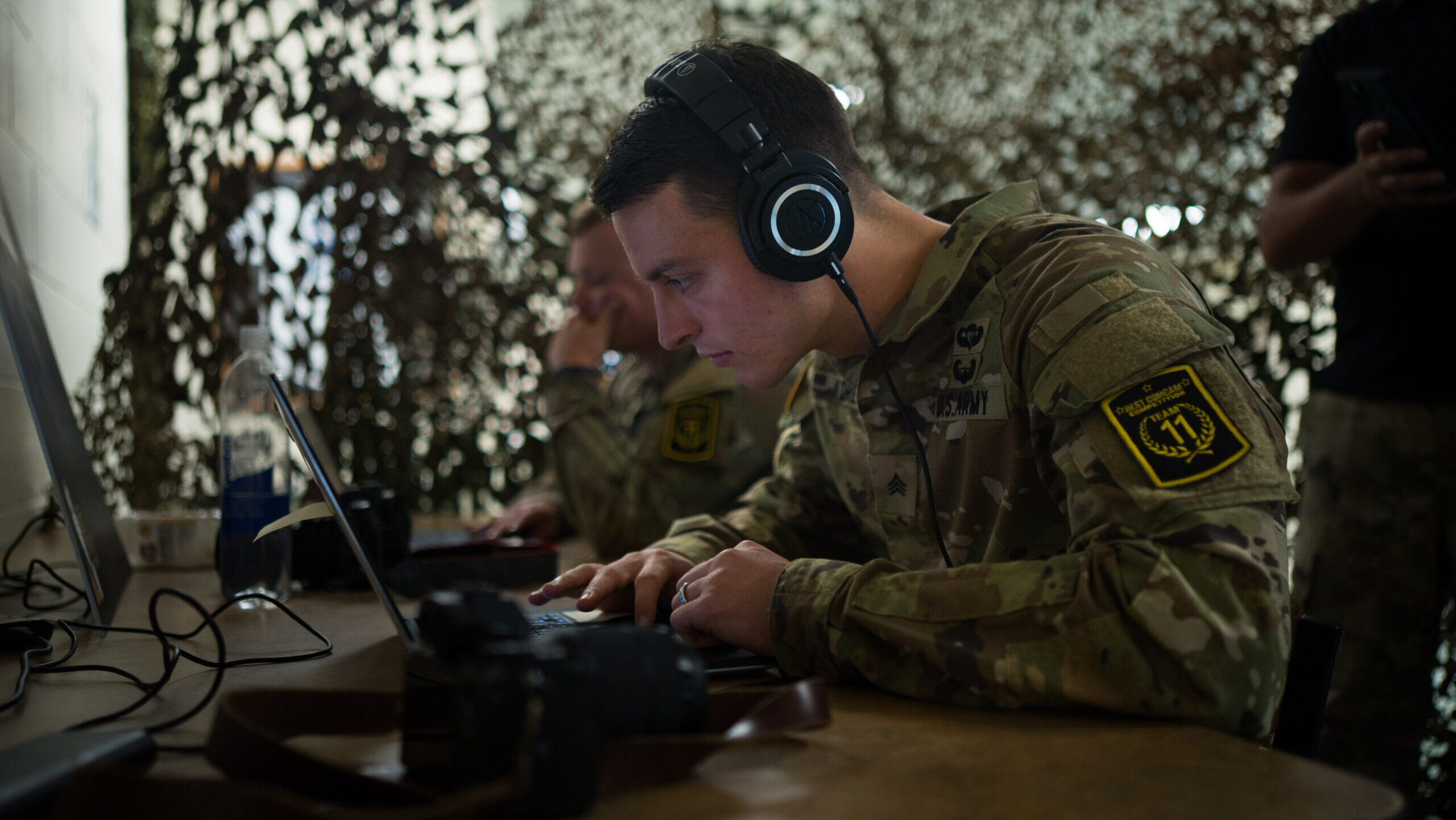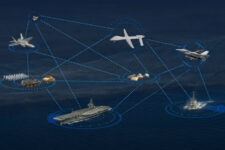
US Army, Sgt. RJ Koreis, assigned to 3rd Psychological Operations Battalion, edits on laptop in “Technical Lanes” event, during the 2023 Spc. Hilda I. Clayton Best Combat Camera Competition at Fort A.P. Hill, Virginia, May 24, 2023. (US Army photo by Spc. Noah Martin)
TECHNET CYBER 2024 —The Department of Defense released today its new information technology advancement strategy, called the Fulcrum Strategy, aimed at revamping the department’s cyber, command, control and communications capabilities.
The strategy, signed by Deputy Secretary of Defense Kathleen Hicks on June 20, plans to invest in infrastructure, interoperability and sustainability all while ensuring the end user — the warfighter — has a smoother experience using IT tools, Leslie Beavers, principal deputy CIO at the DoD told reporters during a media roundtable today.
“Fulcrum really represents the department’s shift towards leveraging technology and information technology as a strategic enabler. Fulcrum prioritizes user experience by driving capabilities that are intuitive, resilient, and combat-ready from day one, and we think that’s important because it sort of takes the idea of having a strategy that is more functional base, and then flips it around and have it more warfighter driven,” Beavers said.
A main initiative in the new strategy focuses on providing secure and sustainable IT capabilities that can be advantageous to the warfighter in combative, multi-domain operations — especially “globally contested” regions.
The idea behind this is to “improve information availability to the warfighters in order for them to gain that decision advantage,” Deputy CIO for Information Enterprise at the DoD, Savan Kong told the roundtable.
Kong also pointed to the strategy’s initiative of delivering a secure, modernized network with faster data transfer capabilities while focusing on resilience in addition to speed. This would be done by fixing legacy technologies across the DoD information network, Kong explained. When modernizing these networks, “zero trust” capabilities will also be implemented.
Another goal outlined in the strategy is to optimize IT governance, meaning to improve delivery efficiency, reduce costs and streamline policies.
“The idea with [line of effort] three is that it drives efficiencies and capability delivery, cost avoidance and cost savings and streamlines policies from governance all the way to acquisition systems. This one really focuses on the idea of the people problem, resources and results,” Kong said.
As the final part of the strategy, the DoD plans to cultivate a “premier” digital workforce. This includes recruiting and retaining the “best digital talent the country has to offer,” the press release read.
“Up until this point, the department has been focusing on the cyber workforce. The pivot here with Fulcrum is now expanding that to include the data, the AI, software development [roles] and really understanding that we’re going to need to up our game on the digital front as well,” Beavers said.
She added that the department is partnering with the federal government and academic institutions to set up scholarship and exchange programs to foster more talent in this area.
An additional workforce change the department is making when looking for “digital” talent is to enlarge the DoD Cyber Workforce Framework — a tool used to fill cybersecurity jobs — to include more roles for data, AI and software engineering.
The next step for Fulcrum is an implementation plan that will come out later this summer, Beavers said, adding that as the plan moves forward, collaboration throughout the DoD will be essential.
“With this strategy, we’re trying to get leaders across the Department of Defense, not just within the CIO organizations, but in all network operations center, weapon systems, program offices, data hubs, software, factories, and other places to make decisions a little bit differently,” she said.






















